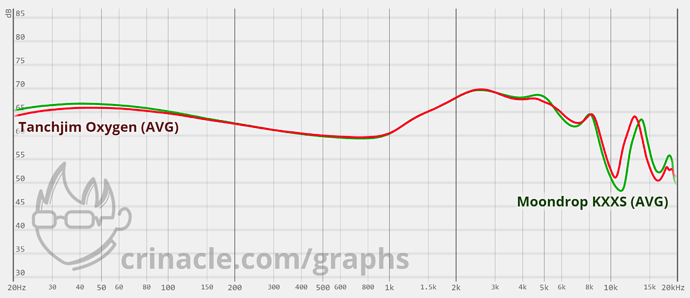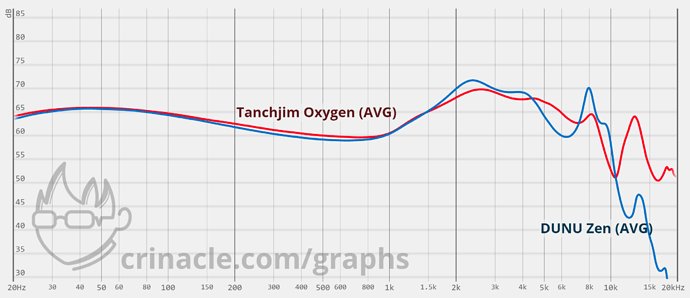To this day, I feel that the HD600 are still some of the best headphones ever because of their timbre. I’ve listened to them on and off for the past 20 years and they’re still as good as when I first heard them. Sometimes I just wonder if I’m looking for a new headphone to just be like the HD600 when I first heard them. Maybe I should get a pair once more, it’s a hassle borrowing them from my brother every time, hah.
hmmm, it isnt looking very good for the FH5S lol.
Small teaser: IMO FH3 > FH5S 
I agree. But even recordings and the mixing and mastering process usually alters the original instruments sound considerably.
Mics have completely different characteristics as IEMs do. A mic’ed guitar will sound completely different with two different mics. Heck, there’s a whole artform to capturing guitar tone just with mic placement.
It doesn’t stop there either, to cram all the instruments into a mix in today’s music, mixing and mastering engineers are forced to going into recordings and cut out large chunks of instruments to make room for everything to sit properly together. You can’t make a good judgement call on the sound and timbre of an electric guitar when everything below 200 hz is cut out to make room in the mix for the bass guitar to sit. Then you have to side chain the kick drum into the bass guitar to allow the transient in since the bass and kick are sharing the same frequencies. UGH.
In the end, many recordings are a highly altered representation of the original recording.
In a perfect world, I’d have a live instrument playing in a perfect room that I could hear directly with my own ears. Have a recording of that instrument that is as accurate as possible to what I heard live. Listen to that recording over and over again on all different equipment until you were able to find something to accurately represent it as closely as possible, and then compare all other playback devices to that. Critically listening of course.
Too add… This is why most people don’t care about any of this shit. This is far down the audiophile rabbit hole to describe why something might sound a little strange/different when listening to the same music on a DD driver headphone vs a planar driver, or a hybrid IEM vs a single DD.
Had a feeling. As soon as I saw that BA in the nozzle. Oh no! ![]()
The issue is that the Treble (BA) has BA timbre and isnt as coherent as others in this price range (250-350 usd). Dont think the BA being in the nozzle is the culprit for that, but that they might have used a particularly bad model for it.
And the bass, while it isnt offending me in anyway way, it doesnt stand out either. Too much of a “meh” experience I guess…
My FH5s should have already been delivered. I ordered from Linsoul. I’m seriously thinking about returning it without even opening the box. I think you can get a full refund if not opened. I’ve never returned an IEM yet.
What say you @Rikudou_Goku ?
You 200% have iems that are better than it and it would be super redundant and a waste of money/space to keep it so I would actually return it. If you can try it and still get a full refund I would do that but if not then just return it lol.
If I try it, I’ll have to pay a 30% restock fee.
How is the soundstage? You did say it was quite large. About the same as the FD5? And how much does the sound change with the switch settings?
The FD5 is bigger and noticeably so.
Havent tried the switches yet, but in my experience they really dont change much of the tuning. And my issue with it doesnt really have much to do with the tuning that switches theoretically changes…
What a disappointment.
It is, for something at this price and for a brand like Fiio.
It probably is around A- (same as the KZ DQ6 lol).
Usually people are pretty happy with an A- grade lol. So I guess my FiiO options are: get the FD5 or save €300 at this point ![]() .
.
Too bad all the good Sony’s are no longer available for purchase it seems. The only other option that might be interesting is the Ikko OH10. What really speaks to me about the FD5 is the cable and the half open design, however the OH10 is warm and costs €80 less…
Most of my iems priced in the 300 usd range is above A. And DQ6 is also like…10x cheaper as well.
I freakin love the OH10s, but be aware that it weights a ton and comfort is a real problem, at least for me.
Your plan of saving for now is what i am doing, these chifi iems are getting cheaper and better at a crazy pace! Give it a few months and god knows what our options will be.
If i had to purchase anything right now it would be the Mangird Teas though, very curious about those.
Meanwhile i am deciding if i will keep the LCD2C or the Ananda, gotta have some full sizes too, right?! lol
Nice video indeed, thanks for posting it, @Resolution! Two nitpicks:
- I’d add that timbre is strongly influenced by timing technicalities, mostly by decay speed/behavior (which might actually be the main way for the material/driver to affect timbre?).
- He mentions how timbre is also influenced by FR, and distinguishes tonality/tuning from FR-related timbre by describing the latter as a zoomed-in view (of e.g. a range such as 6–8k). I think the idea here is that timbre is affected by how the overtones of a given instrument/voice are reproduced in relation to the main tone (and maybe how this relation remains consistent for different tones). Those individual tones may be several octaves apart though (so we’re not necessarily looking at just a small range of the FR).
I think everything in the technical acoustical design of the earphone/headphone/speaker etc. attributes to the overall timbral characteristics of the sound.
I have observed technically faster drivers can accentuate the textural & detail qualities of the music especially in the lower registers. Not sure how this difference effects the timbral characteristics of the sound though.
If I understood that video correctly, it says that in the end, timbre is determinded by FR: It mentions (1) FR-related timbre, which could be seen by zooming in on a graph, and (2) material-induced timbre, which is also assumed to be observable on an FR graph in principle, it’s just that we don’t know what exactly to look for (yet).
Just wanted to point out this would be misleading, as timbre is also influenced by timing. But yes, there may well be (even) more to it ![]()
I disagree with this. You cant tell the timbre of an iem by looking at the FR, since timbre is a qualitative factor. Although you might be able to somewhat tell what the tonality is by looking at the graph.
By material-induced timbre, I am assuming that they are talking about the different driver techs being used (dd, BA, piezo, planar and more) and thats an even bigger no in terms of judging the timbre on it. You might be able to generalize that all non-dd´s have a more unnatural timbre in comparison to dd´s but in the end, its the tuner that needs to do a good job. Its why you see stuff like campfire audio using bellsing drivers and no one knew it, it was because they did a good job with the tuning. With budget chi-fi, generally even if they use knowles, they arent as good as these other more high quality brands like Sony.
To be fair, they do emphasize that you cannot jump to conclusions regarding the timbre just from knowing e.g. the driver type. And they just mention FR in the sense that different timbre can be explained by (micro?) differences in FR. Not in the sense that we can actually judge timbre just from looking at a graph (they say we can’t, at least due to us not knowing what exactly to look for).
I do sympathize with the video’s attempt to make the concept of timbre easier to understand by describing where exactly differences in timbre might stem from. I mean, you have a recording of a tone played with a given instrument. Now you listen to that recording via different IEMs and notice they reproduce that tone with different timbres. What are they doing differently? Basically, my answer would’ve been (1) FR (mostly the relative reproduction of the main tone and overtones), and (2) timing (mostly decay speed/patterns). But maybe I’m somehow missing the “qualitative factor” you mentioned?
Graphs shows the quantitative factors like how much bass, treble a transducer is putting out. But you wont be able to compare 2 graphs and then say that one of them is 100% going to have a tighter, faster bass just because it looks a certain way. Yes, having lower bass quantity does IMPLY that it has a higher quality, since in most cases you are trading quantity for quality.
Same example applies with timbre.
Comparing the KXXS with the Oxygen for example, shows that they are extremely similar. But in actual listening, the KXXS is the one that sounds like it got average timbre while the Oxygen is the one that is excellent at it.
Comparing the Oxygen to the Dunu Zen on the other hand, shows that they got essentially, identical bass quantity. But listening to them and the Zen sounds like it got 3db more bass because of how well textured it is in comparison to the Oxygen. Again, this is a qualitative factor that isnt shown on the graph.
How’s the timbre on the FD5, I’m assuming it’s better than the BL-03?
And which IEM is warmer, the FD5 or the FH3? Still heavily debating whether I am going to get the FD5 as you can tell lol.

